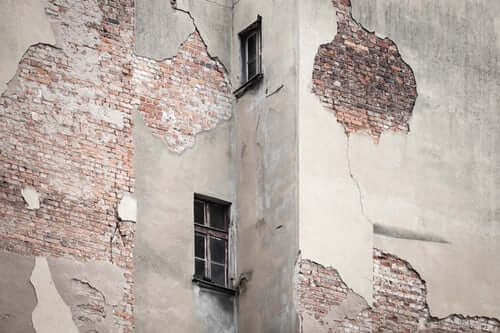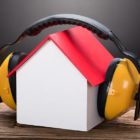Subsidence occurs when the ground underneath a building sinks, causing its foundations to start to sink. This causes buildings to become misaligned, leading to considerable structural damage in the process. Subsidence is a problem dreaded by property owners; not only being able to damage the structural integrity of a property, but also its value. Also, building subsidence makes a property a lot less appealing to prospective buyers and even mortgage lenders.
It is important to be aware of the signs of subsidence to be able to identify when it is starting and when it is occurring in any case. Importantly, the sooner it is properly and effectively identified, the easier and less costly it is to manage.
Thus, understanding what causes subsidence, as well as how to look out for it and what to look for will help property owners and residents to start to take the necessary measures to prevent it occurring or progressing to much more damaging levels.
Are Cracks in the Walls a Sign of Building Subsidence?
Whilst one of the biggest and most well-known signs of subsidence, a crack in the wall does not automatically mean your property is suffering from it. It is more likely that cracks in your wall are due to the impact the changes in temperature have on a house overtime. There are a multitude of different reasons why your house has cracks in any of its walls. It is however, best to get any cracks of note checked out to rule subsidence out or catch it before it becomes much worse.
What Are the Signs of Building Subsidence?
There are numerous different signs that could suggest a building is suffering from subsidence. One of the most prominent of these signs is cracks on the inside or outside of the property. These cracks are usually diagonal, and are wider at the top. Cracks caused by subsidence also typically appear near to doors and windows of the building.
However, whilst cracks are one of the main signs of building subsidence, there are others too:
- Sticking doors and windows
- Wallpaper rippling
- Expansion of existing cracks
If you notice any of these potential signs of building subsidence, it is imperative that you call your buildings insurer as soon as you can. They will arrange a surveyor to inspect the property and check that it is subsidence. The sooner you can identify the subsidence, the easier it is to deal with.
What Causes Subsidence in Buildings?
Subsidence can be caused by a range different influencing factors and. The location of the building can be a major factor in determining whether it is at risk of subsidence or not. For example, properties that are built close to a former quarry can be at risk of subsidence. This is because ground surrounding this area is more likely to shift, as the material filling the site decomposes, causing the development of an uneven surface upon which the building sits which can subsequently misalign a building’s foundation.
Other causes of subsidence include:
- Soil type
- Trees and large shrubbery
- Leaks surrounding the property
- Age of the property
The soil type can have a major impact on whether a building is at risk of subsidence or not. Clay soil can change drastically in different weathers, shrinking and shifting when it gets warmer. This is due to the more malleable nature of clay compared to soil and concrete. This can make the ground beneath a house unstable and increasingly likely to sink and ultimately, pose a greater risk of property subsidence.
Trees and large shrubbery that are planted close to a property (10 metres away or 40m for large trees) can also place the property at a greater risk of subsidence. The plants can drain moisture from the soil underneath the property’s foundations, making it dry out and cause the ground to sink.
If there are any leaks or incidences of flooding in the immediate vicinity of the property for a prolonged period of time, for example, a water main leaking for many weeks, this can cause the soil underneath the ground to soften or wash away entirely. This can then make the ground beneath a property sink, causing subsidence.
The age of the property can also have an impact on its risk of subsidence. Period properties might have shallow foundations that put it at greater risk of subsidence. However, this is not the case with all types of period properties, and this is something that will need to be assessed on a case-by-case basis.
Property buyers can help reduce the risk of subsidence for their impending purchase by looking out for these features during viewings and arranging for surveys or even flood risk assessments.
Can I Prevent Building Subsidence?
Property buyers can prevent the risk of their next purchase suffering from subsidence by looking out for the various different signs and causes during viewings. Checking whether a property is surrounded by excessive trees and shrubbery, whether the building is located close to an old quarry, or identifying whether or not there are any major leaks damaging the surrounding soil.
When viewing a property, you should also check for major cracks both inside and outside of the building, as well as whether doors and windows are stiff, and also whether any wallpaper is rippling. Whilst by no means conclusive, these signs may be the first indications of subsidence’s presence.
If you already own the property, you can make sure trees and large shrubs are planted a safe distance away from the building. This distance can vary depending on the plant type, however, as a general rule, trees should not be planted within 10m of the property, or 40m for larger trees.
Additionally, keeping your guttering in good condition and preventing any major water leaks can further help you to prevent your property from suffering subsidence. Whilst subsidence can be a major cause for concern, there are various different tactics, such as those mentioned above, that can alleviate its damage on a property, or prevent it entirely.
Think about having a sound insulation test or an air tightness test before purchasing as failure to pass these can cause structural problems further down the line.
The post What is Building Subsidence? appeared first on RJ Acoustics.



